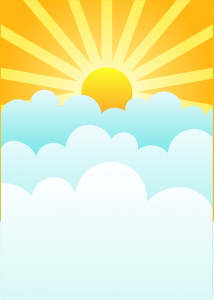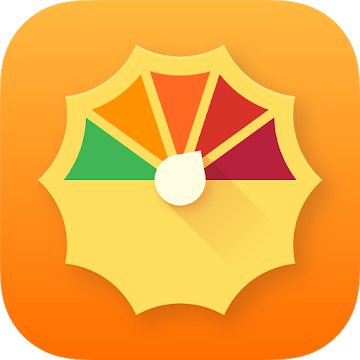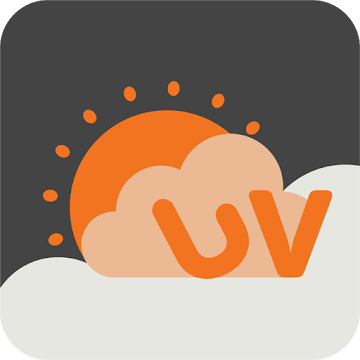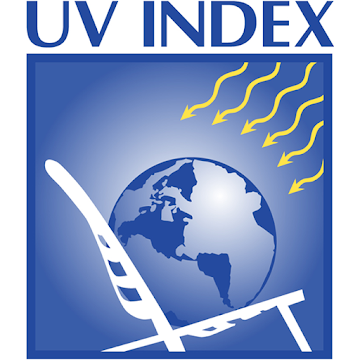Summer Sun Safety: There’s an app for that!
by June Kaminski, RN MSN PhD(c) Editor in Chief
CJNI was initiated by June Kaminski in 2006 when she was President-Elect of CNIA. She is currently Curriculum Coordinator of a BSN Advanced Entry nursing program at Kwantlen Polytechnic University; Past President of the Canadian Nurses for Health and the Environment and Editor in Chief of the Online Journal of Nursing Informatics In 2012, June was honored to receive the CASN and Canada Health Infoway’s inaugural Nursing Faculty E-Health Award 2012 in Ottawa Canada. She also won the Distinguished Teaching Award from Kwantlen Polytechnic University in 2016. She offers the Nursing Informatics Learning Centre for nurses.
EDITORIAL

National and international agencies encourage all people to pay attention to the UV-Index rating every day before venturing outside. For instance Environment Canada and the Canadian Cancer Society recommend that everyone “reduce the time they spend in the sun when the sun’s rays are at their strongest, typically between 11 a.m. and 3 p.m. from April to September, or any time of the day when the UV index is 3 or more. Individuals should cover up with a wide-brimmed hat, tightly woven or UV-protective clothing and UV-protective sunglasses” (Canadian Newswire, 2017, p. 1).
An example of this is the EPA UV-Index https://www.epa.gov/sunsafety/uv-index-scale-0
Solar radiation is also a concern for people who work outdoors, especially during the hot days of summer. Outdoor work potentially puts them at risk for UV ray overexposure, dehydration, heat exhaustion and heat stroke. “Despite the wide-spread availability of educational materials and sun safety resources …and the easy availability of a wide range of protection measures, numerous studies have shown that implementing effective sun protection programs for outdoor workers continues to be highly challenging” (Kramer et al., 2015, p. 2).
Summer activity health promotion and prevention campaigns have traditionally been done by word of mouth, health literature (pamphlets, flyers, posters, and so on) or via mass media including billboards, television, radio, and more recently, the internet and mobile devices. All of these mediums can be effective tools to reinforce summer safety, but perhaps the most convenient are mobile devices and relevant safety and health promotion apps. “The use of mHealth apps represents a shift on health promotion practices that used to rely heavily on mass media” (Lin & Bautista, 2017, p. 347). Over the past decade or so, the role of mobile health (mHealth) devices and applications (apps) have steadily evolved to become a preferred source of health information for many people.

“Interventions to promote sun-protective behaviours may have limited effects on people on holidays because of spontaneity and more risk-taking behaviours while away from their usual routine. Workplace interventions were found to be more effective, especially when supported by management” (Barrett, Usher, Woods & Conway, 2019, p.402). Having access to apps that warn people of high UV index readings may prompt them to be more careful, to bring a hat, or seek out shady areas.
This can be particularly effective when app messages are personalized, localized and contextualized. “Although most sun safety campaigns target the general population in an impersonal fashion research shows that tailored messages are more effective at increasing risk perception, sun safety knowledge, behaviour and beliefs compared to non-tailored interventions. This may be because tailored messages increase cognitive activity, enhance message relevance or activate self-related mental processing” (Cheetham & Ogden, 2016, p. 3).
It is very helpful when UV readings are up to the minute and are localized to the user’s current location. This requires well-designed apps that combine predictive analytics with sophisticated weather sensors that adapt to the user’s locale, and time of day. “Commonly, weather forecasts give information about daily maximum UVI, which sometimes can largely deviate from the observed values, especially if the cloud properties (cloud cover and/or cloud optical depth) are not properly reproduced in the forecast. Moreover, during some periods of the year (e.g. during summer vacation) we need information of the UV intensity fluctuations throughout the whole day. The UVI value at noon is not enough to fully determine the risks of UV overexposure. Nonetheless, there are hourly global UVI forecasts available to the public, for example, sunburnmap. com, which is powered by Google Maps. Weather mobile applications show hourly UVI distribution for the current location of users at a selected local time, but they do not provide any information about the reliability of such estimates. It could be assumed that for the cloudless sky conditions the models’ results will be valid as the basic prognostic parameter, the total amount of column ozone (TO3), is reliably reproduced by present weather prediction models (WPMs). For all-sky conditions, a proper parameterization of cloud cover prediction by WPMs is crucial for optimising the model’s performance (Guzikowski, Czerwinska, Krzyscin, & Czerwinski, 2017, p. 271)
Williams Merten, Higgins, Rowan, & Pragle (2014).sampled 423 beachgoing adolescents between the ages of 13 to 21 visiting four Florida beaches. “The majority of respondents did not know (63%) that the sun is strongest between 10 AM to 4 PM (peak hours)… (12%) wore a hat for sun protection and only 13% reported wearing protective clothing as a barrier from the sun. Alarmingly, 62% said that they sometimes, rarely, or never apply sunscreen when going outside” (p. 39). These findings reinforce the need for friendly constant reminders that can help keep people safe yet support them in reaping the benefits of fresh air and sunshine.
Heffernan et al., (2016) conducted a case study where they “developed an Apple and Android app, both named Safe-D, to safely improve vitamin D status in young women through encouraging safe ultraviolet radiation exposure. Difficulty stems from the need to balance adequate and safe UV exposure to stimulate sufficient vitamin D synthesis, against the harmful levels that increase risk of melanoma and other skin cancers” (p. 3).
Here are links to some potentially helpful apps to recommend to clients to improve their awareness of sun safety.

UV Index Now – UVI Mate
https://apps.apple.com/us/app/uvi-mate-global-uv-index-now/id1207745216#?platform=iphone
https://play.google.com/store/apps/details?id=au.com.aershov.uvmate&hl=en

UVLens – UV Index
https://apps.apple.com/au/app/uvlens-uv-index/id1060878359
https://play.google.com/store/apps/details?id=com.spark64.uvlens.mobile&hl=en

EPA’s SunWise UV Index
https://play.google.com/store/apps/details?id=gov.epa&hl=en
References
Barrett, F. Usher, K. Woods, C. & Conway, J. (2019). Sun protective behaviours during maximum exposure to ultraviolet radiation when undertaking outdoor activities: an integrated literature review. Journal of Public Health (09431853), 27(3), 393–405.
Canada Newswire. (2017, May 17). Canadian Cancer Society Urges Canadians to Heed Daily UV Index Following National Sun Safety Survey.Canada Newswire.
Cheetham, I., & Ogden, J. (2016). Enhancing sun safety in young women: The relative impact of format and temporal framing on beliefs and behaviour. Cogent Psychology, 3(1).
Guzikowski, J., Czerwinska, A. E., Krzyscin, J. W., & Czerwinski, M. A. (2017). Controlling sunbathing safety during the summer holidays – The solar UV campaign at Baltic Sea coast in 2015. Journal of Photochemistry & Photobiology B: Biology, 173, 271–281.
Heffernan, K. J., Chang, S., Maclean, S. T., Callegari, E. T., Garland, S. M., Reavley, N. J., … Wark, J. D. (2016). Guidelines and Recommendations for Developing Interactive eHealth Apps for Complex Messaging in Health Promotion. JMIR Mhealth And Uhealth, 4(1), e14.
Kramer, D. M., Tenkate, T., Strahlendorf, P., Kushner, R., Gardner, A., Linn Holness, D., & Holness, D. L. (2015). Sun Safety at Work Canada: a multiple case-study protocol to develop sun safety and heat protection programs and policies for outdoor workers. Implementation Science, 10(1), 1–18.
Lin, T. T. & Bautista, J. R. (2017). Understanding the relationships between mHealth apps’ characteristics, trialability, and mHealth literacy. Journal of Health Communication, 22(4), 346–354.
Williams Merten, J. W., Higgins, S., Rowan, A., & Pragle, A. (2014). Sun Safety Knowledge, Attitudes, and Behaviors among Beachgoing Adolescents. American Journal of Health Education, 45(1), 37–41.






